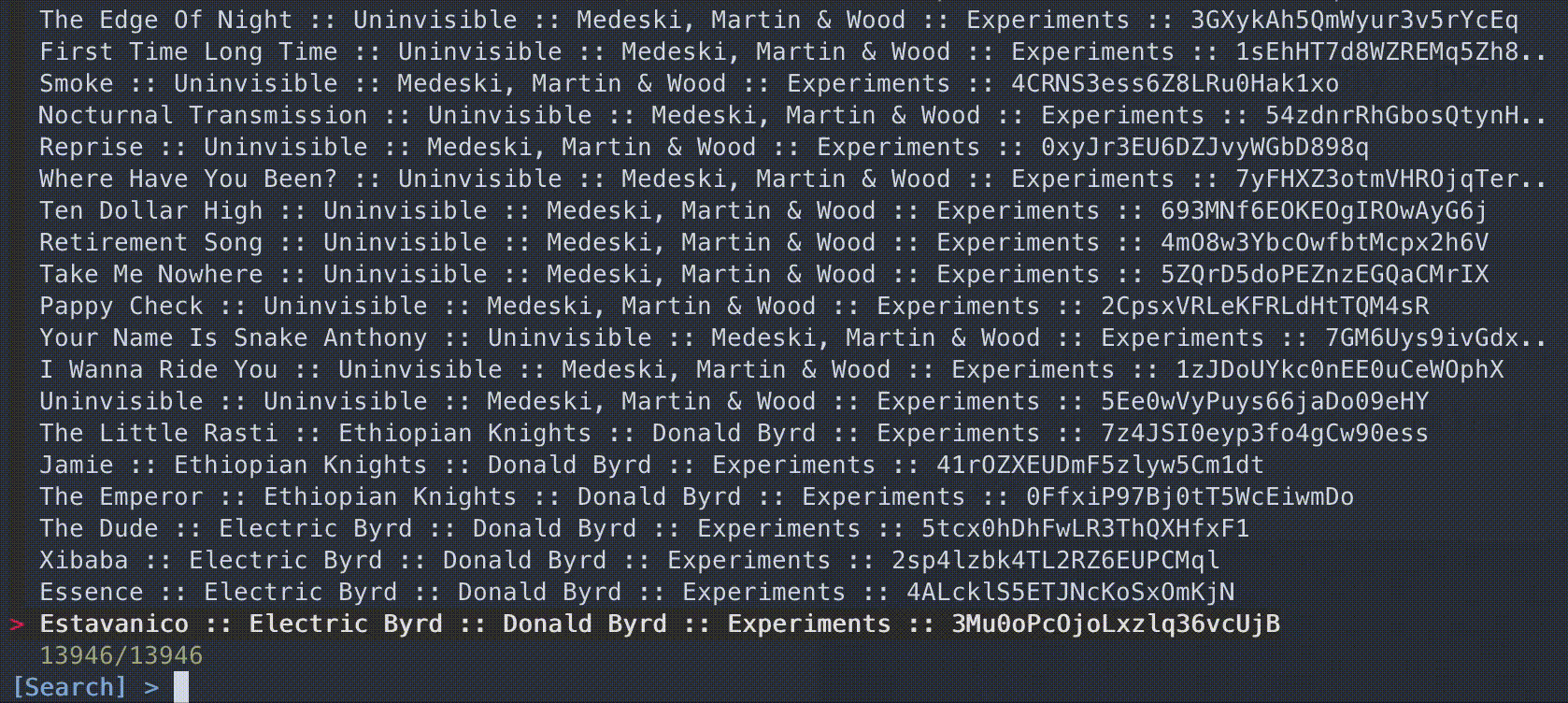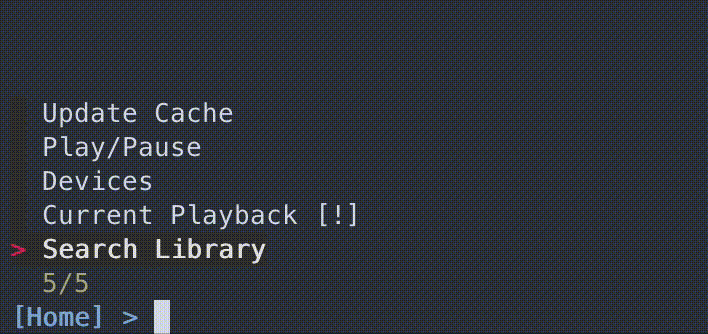Spotify, for all it’s great features, does not have the functionality to search personal playlists for songs. Before I continue my rant, here is what I had in mind when I had started throwing things in the kitchen sink.

Most of my Spotify playlists are a bunch of albums strung together one after the other. I rarely have mix-tape type playlists, which I only create with the intention of playing at social gatherings (eventually..)
This was not really a problem in the days of yore when Spotify was just a cool-to-have piece of social capital. But I now have various playlists and have lost track of the different albums in each playlist. Besides, searching for songs/albums in personal playlists is not specific to the described scenario.
So I decided to code this monstrosity as I was tired of twiddling my thumbs waiting for them to introduce this in the actual app.
spotifz
At the core of all of this is fzf, which has become quite a ubiquitous search tool on the command line. It expects a list of items which the user can search for and select from. Then, it returns the selected item(s). That’s the gist. It is used here in a similar fashion as one would use rofi (or dmenu). Also, here it is expected as a binary and called by forking a shell (yep!).
The rest is just dealing with the Spotify API and some caching of personal data.
The interface is quite basic and so there is no point going through all of it’s functionality. Instead, it might be worth putting down a word or two about the paradigm followed to build the interface, which would set us up to discuss the main search function seen in the demo above.
Interface
The interface is made up of screens. Here is a display of two screens: ‘Home’ and ‘Devices’ (helps you switch playback to a different device).

Each screen can be thought of as a separate call to fzf with the options for that screen passed as the list of items. Once an option is selected by the user, the subsequent call to fzf is made with the options on the selected screen.
fzf requires the list of items to be separated by the new-line character (\n).
So on the client side, this means that we can concatenate all the options for a
screen (represented as strings) like so:
screen_options = ['Devices', 'Search', 'Play/Pause']
subprocess.run(['fzf', '\n'.join(screen_options)])
This works well when the number of items to be sent to fzf is small in number. But the pipe breaks down miserably when the number of items grows beyond a handful of items. Besides, even if one finds a way to save shell pipe, the sheer volume of data passed (of the order of 10K tracks) slows down the whole process to a halt.
FIFO to the rescue
As a workaround, I decided to conceptualize the pipe as a UNIX FIFO.
Before launching fzf, a Python thread is spawned which starts pushing all the songs to a temporary FIFO. This runs in the background while the main process forks a shell to run fzf in (which reads from the FIFO). This way, the process that pipes all the items is different from the process that runs fzf.
Here is the idea in a few more words.
executor = ThreadPoolExecutor(max_workers=1)
iterator_future = executor.submit(iterator_func, config, fifo_path)
with open(fifo_path, 'r') as sink:
subprocess.run(['fzf'], stdin=sink)
The function iterator_func in this case reads the songs from all my playlists
(which are cached before running this search) and writes them to the FIFO like
it would to any other file descriptor.
Bear in mind, this hack works only because fzf is capable of updating the list as more items get poured into the FIFO.
Wrapping up
This serves my immediate purpose and so I am quite satisfied. Every now and then I have to run the command to cache the most recent versions of all my playlists, which I could automate via cron at the very least (but I have just not had that itch yet).
Another superficial issue that hasn’t bothered me to a large extent yet is around how the Spotify URIs are passed from one function to another via the UI. It’s unobtrusive but certainly not elegant (as you can see from the demo above).
Setting up the Spotify interface also borders on being cumbersome. One needs to sign up as a developer and register an app with Spotify.
I have been meaning to include more functionality so I don’t have to leave the terminal (something other terminal users would sympathize with) most of which is just interfacing with the Spotify API.
It would still be nice if Spotify implements this in the app :|
